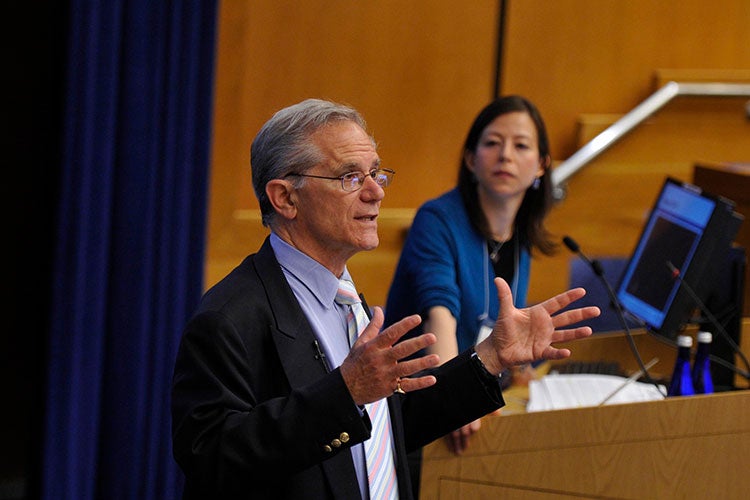With the modern office-based economy, it’s easy to think about workplace injuries as relics of a bygone era, when factory workers smelted iron in blast furnaces and coal miners toiled in unregulated conditions.
Workplace safety remains a challenge in many regions of the globe, and developed nations, like the United States, aren’t exempt.
“We still have a long way to go,” said Jack Dennerlein, adjunct professor of ergonomics and safety at Harvard T.H. Chan School of Public Health. “There’s still a lot to be done in terms of basic safety in the workplace.”
Dennerlein pointed to construction and heavy industry, noting, “People are still dying in those jobs.”
It’s easy to think about workplace injuries as relics of a bygone era.
What’s more, the resurgence of manufacturing after the 2008 recession and the growth of the telecommunications industry has led to a new generation of hazardous jobs. “Some people would call it an epidemic of cell phone tower deaths,” Dennerlein said, explaining, “You’ve got the same guy working in a single truck, with a ladder, going up towers, putting cables into people’s homes.”
“There have been a number of fatalities,” he said.
Nursing is another profession where basic physical safety is an issue. “In what industry do you expect people to lift other people?” he asked. Even in construction, an 80-pound bag of concrete is about the heaviest thing a single person will lift, but nurses lift and maneuver full-grown adults, because it’s a profession where person-to-person contact is the traditional expectation.
It’s why guidelines like SafeWell, established by Harvard Chan School’s Center for Work, Health, & Well-Being, build upon a foundation of “basic, fundamental health and safety programs,” Dennerlein said.
Of course, safety and health issues are intrinsically connected. Heavy jobs one might consider dangerous – those industrial, mining and agricultural occupations – have the benefit of physical activity. Today’s office-dwelling workers are sedentary. “If you look at the amount of occupational physical activity over the last 20, 30, 40 years, there’s been a decrease [in activity] that accounts for 80 percent of the increase in the obesity rate in the United States,” he noted.
Then there are jobs like trucking, which combine the dangers of a sedentary lifestyle with a lack of regular sleep and greasy truck-stop food.
Tackling all these interconnected issues is why “integrated approaches” are most effective, Dennerlein said.
